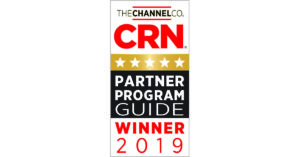A couple weeks ago I had the pleasure of attending the Healthcare Information and Management Systems Society’s (HIMSS) 2019 Global Conference in Orlando. The theme of the event was “Champions of Healthcare Unite” and it really inspired and motivated me to become one of those champions. I feel we are all privileged to work in healthcare and contribute to patient outcomes, and as a facility professional I know how important the non-core services are to frontline services. I also know the challenges we all face today given the rapid evolution of technology and the expectation to do more with less.
I am positive, however, that we are at a stage where we can really embrace technology and use it to our advantage. Hal Wolf, president and CEO of HIMSS, clearly noted during the event that it is information and technology that will help in the future of high-quality care and I believe that is the same in how we design and operate buildings.
Learning from frontline care models
In facility management we are required to make decisions quickly, but we need to make informed, evidence-based decisions with the data we have available. This can be a challenge, not that we don’t always have the data but because it can be locked away in siloed systems. It becomes an obstacle to access, and that leads to technology frustration.
This has been the same in frontline care and one of the reasons why the Centers for Medicare & Medicaid Services introduced its incentive program to promote interoperability, Meaningful Use. HIMSS responded with its EMR Adoption Model (EMRAM) as a stepping stone to help healthcare IT reach subsequent stages of meaningful use. This incentivized the need for interoperability and data sharing and seems to have paid off as there were many health systems recognized at this year’s show for reaching EMRAM Stage 7.
However, there was still a sense of frustration at the conference that these incentives are not enough. Not all the data available in the electronic health record (EHR) is shared. We are achieving the minimum requirements, but why is this so when that data belongs to the patient? Why is it not all accessible?
This is similar to the challenges we face in facility management. We have data in the building automation system, as well as the energy management, space management, asset management and maintenance systems. But how often do we share this data? And if it is being shared, are we sharing it wisely so it can be used to drive improvements in processes and decision making?
Once we have defined where interoperability can add value, we also need to make sure the data is structured so it can be understood and used by different systems. Having contextual data that can be accessed by multiple people and systems is one way facility management can follow in the footsteps of the EMRAM model.
The challenge is clear: we need to be more open to collaboration and the value interoperability can bring. We also need to agree on how we share data in a more structured way so we don’t just meet the minimum requirements but enable innovation and drive change.
Better ways of using data
Artificial intelligence (AI) and machine learning (ML) also were key topics during the HIMSS conference sessions and throughout the vendors’ marketplace. Now that we are gathering all of this data, we need solutions on how best to store it, process it and make sense of it. The deployment of AI and ML technologies in healthcare delivery is starting to be adopted into core practices for interpretation of images and in laboratories for specimen analysis. However, in facility management we are only at the beginning stages of adopting these technologies, and it’s moving far slower.
We have all been asked to do more with less and are all challenged with having the right level of competency in our staff. If we can utilize the available technology, we could begin to create new solutions to these problems. For example, AI and ML can be applied to better prioritizing maintenance work, interpreting data and looking for patterns. This enables the facility team to focus on the high priority tasks. We can collect data from Internet of Things sensors and location-aware services (real-time location systems) to get an understanding of patient flow and space usage. All this data can provide much more insight and be used to help build more detailed business cases for future capital investments.
First steps to healthier environments
In her keynote speech, Karen Desalvo, former National Coordinator for Health IT, also talked about the broader ecosystem in health and how we need to consider the social determinants of health. We go to an emergency center or hospital when something is wrong, but in many cases the environment we work in day to day (think about the air quality around you) detracts from our own health.
My colleague, Walt Vernon, recently represented the International Federation of Healthcare Engineering (IFHE) at the World Health Organization (WHO) executive board meeting where climate change was recognized as the defining public health challenge of our time. So how do we become champions of healthier environments? We can start with our real estate portfolios and look for ways to embrace and support sustainable and energy efficient solutions, challenge ourselves to reduce our carbon footprint and set an example for other industries.
Champions of health
Attending the conference was a great educational experience, and an excellent opportunity to talk and collaborate with many different technology providers and stakeholders. Having worked in healthcare for over 15 years, I am excited about the advancements I’m seeing in technology and how the industry is embracing this need for collaboration. I feel passionately that this is the only way we can deliver transformative, smart healthcare buildings that impact our communities.
To learn more about how we here at Schneider are helping healthcare facilities around the world tackle these issues, check out our healthcare solutions. You can also learn more about our involvement with the Association of Medical Facility Professionals (AMFP), an association dedicated to the development and collaboration of those working in healthcare environments. With the AMFP’s wide array of professionals, we have what it takes to be the driving force for change. I am excited for what 2019 brings!


